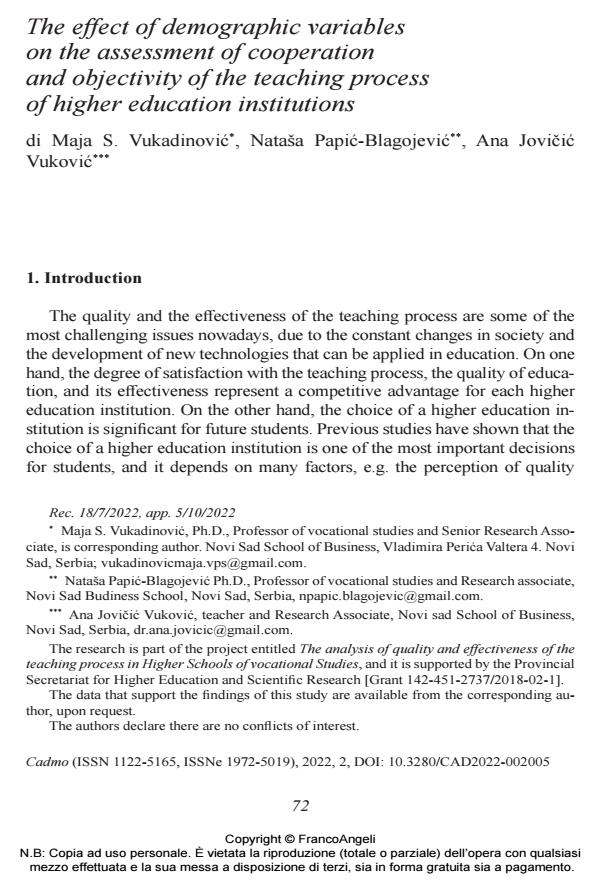The effect of demographic variables on the assessment of cooperation and objectivity of the teaching process of higher education institutions
Journal title CADMO
Author/s Maja S. Vukadinovic, Natasa Papic-Blagojevic, Ana Jovicic Vukovic
Publishing Year 2023 Issue 2022/2
Language English Pages 13 P. 72-84 File size 201 KB
DOI 10.3280/CAD2022-002005
DOI is like a bar code for intellectual property: to have more infomation
click here
Below, you can see the article first page
If you want to buy this article in PDF format, you can do it, following the instructions to buy download credits

FrancoAngeli is member of Publishers International Linking Association, Inc (PILA), a not-for-profit association which run the CrossRef service enabling links to and from online scholarly content.
Keywords: demographic variables, cooperation, objectiveness, students, teaching process, higher education institutions.
- Entrepreneurship and Development for a Green Resilient Economy Nataša Papić-Blagojević, Biljana Stankov, pp.181 (ISBN:978-1-83797-089-6)
- The Quality of Online Higher Education Teaching during the COVID-19 Pandemic: Evidence from Serbia Ana Jovičić Vuković, Jelena Damnjanović, Marija Vranješ, in Acta Educationis Generalis /2024 pp.83
DOI: 10.2478/atd-2024-0020
Maja S. Vukadinovic, Natasa Papic-Blagojevic, Ana Jovicic Vukovic, The effect of demographic variables on the assessment of cooperation and objectivity of the teaching process of higher education institutions in "CADMO" 2/2022, pp 72-84, DOI: 10.3280/CAD2022-002005